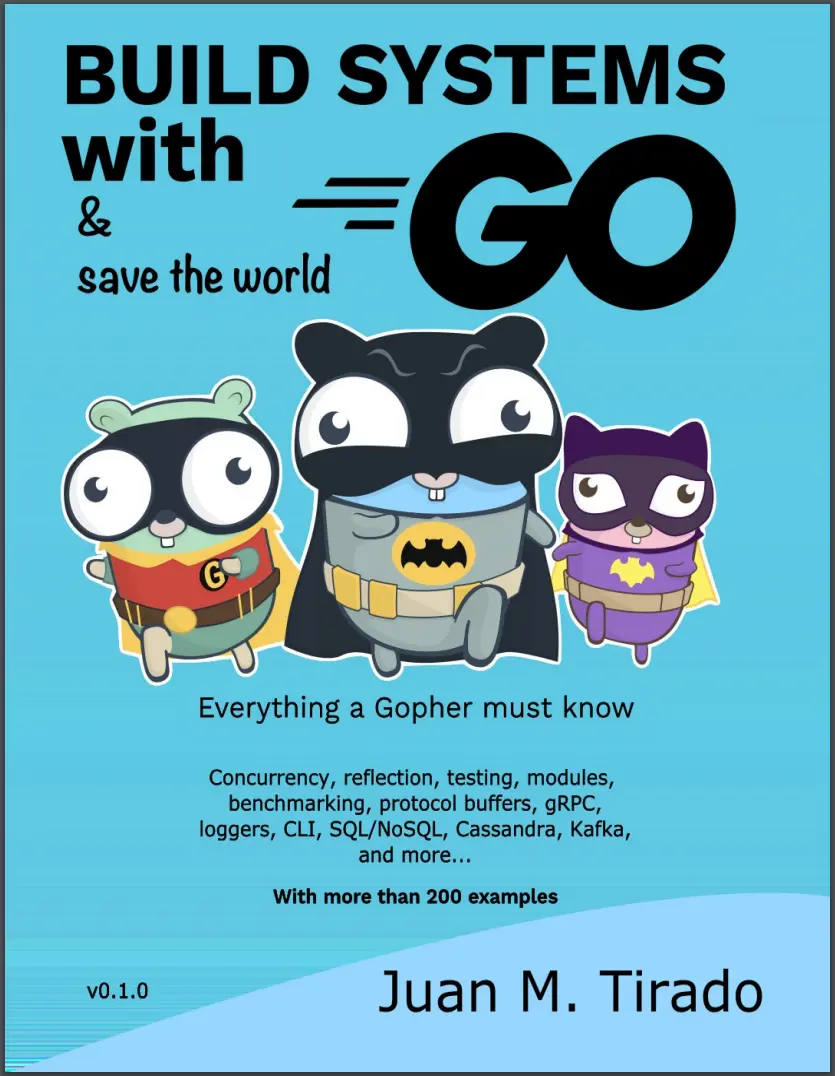Build Systems With Go

- Author: Juan M. Tirado
- Release date: 2021
- Publisher: Самиздат
- Number of pages: 472
- File Size: 3,8 МБ
Build systems with Go Everything a Gopher must know Juan M. Tirado
Build systems with Go by Juan M. Tirado Copyright ©2021 Independently published Cover by Juan M.Tirado Gopher Gotham image by Egon Elbre (@egonelbre) All rights reserved. No part of this work may be reproduced or transmitted in any form or by any means, electronic or mechanical, including photocopying, recording or by any information storage or retrieval system, without the prior written permission of the copyright owner. This book has been entirely written using LATEX. EPub 3.0 conversion was done using tex4ebook: https://github.com/michal-h21/tex4ebook
Revision History: v0.1.0: 2021-03-29 First version
PREFACE
Welcome and thank you for reading these lines. Since I started programming in Go, I have always enjoyed its extraordinary commitment to simplicity. It is difficult to find another language that can make complex things so easily. That is the beauty of this language. Years have passed by and Go is no longer the new kid on the block, it has already become a mature language surrounded by a rich ecosystem of libraries, projects, and tools. Talking about Go is no longer talking about that fancy language that makes your life easier. Go is the gravity centre of a continuously growing ecosystem of amazing solutions maintained by a devoted community of developers. Go was originally designed to simplify the building of complex systems. However, when a developer decides to learn Go most of the learning resources simply explain the language. This book goes one step further by exploring tools, libraries, and projects from the Go ecosystem you can use to build ready-for-production systems. Everything a gopher must know in a single book. I hope you find this book useful.
WHO SHOULD READ THIS BOOK?
This book is oriented to new Go adopters and developers with programming experience in other languages. The first part of this book covers the Go language from its basics to more advanced concepts. The second part assumes these concepts to be known by the reader and explores how to use them with other tools to build systems. If you are new to Go you can start from the beginning. However, if you have some experience you can start with the second part and revisit any basic concept if needed. Or you can simply go and check the chapters at your convenience.
If you liked this book, share it with your friends, thus you help us develop and add more interesting and necessary books for you!